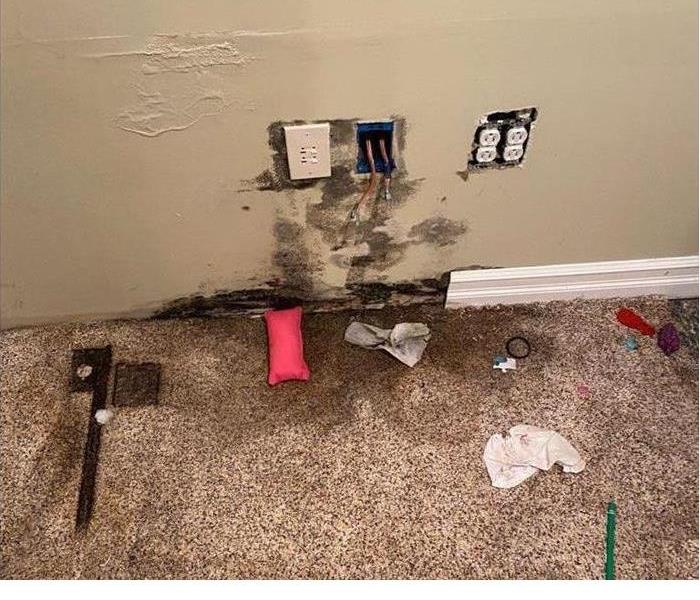Mold removal in NJ, Mold remediation in NJ, Mold in NJ, Mold Humidity Bloom in NJ
9/8/2020 (Permalink)
Mold removal in NJ, Mold remediation in NJ, Mold in NJ, Mold Humidity Bloom in NJ
Mold Humidity Bloom is the growth of mold within a living space due to the elevation of indoor relative humidity at or above 60 percent relative humidity for a period of time greater than 72 hours and must be maintained for growth to continue. When the humidity is above 60 percent relative humidity, molds will germinate causing what is referred to as a mold bloom. These molds can bloom in many colors and are often confused with dust, dirt, foxing, or cobwebs.
Humidity for an extended period of time, typically in excess of 72 hours to initiate the bloom and must be maintained for growth to continue. When the humidity is above 60 percent relative humidity, molds will germinate causing what is referred to as a mold bloom. These molds can bloom in many colors and are often confused with dust, dirt, foxing, ghosting, or cobwebs
Both active and inactive mold can have a distinctive smell, which most people describe as musty.
Active mold in the early stages of a bloom has hair-like filaments in webs, which develop a more bushy appearance as the bloom matures. This is more easily seen under magnification. Active mold is soft and may smear when touched with a fine brush. It may also be slimy and damp.
Inactive mold is dry and powdery and will seem to brush off materials readily.
Mold and mildew are words that refer to more than 100,000 species of fungi. Mold spores are present everywhere in our environment, generally in a dormant state where they do little damage. Spores require moisture to become active. They do not require light.
When water or high relative humidity provides the necessary moisture, dormant spores will germinate, grow fine web-like structures, and eventually produce fruiting bodies that release more spores. Most molds will germinate at 60 percent relative humidity. Increases in temperature can speed the growth rate of active mold.
There are 4 critical requirements for mold growth – available mold spores, available mold food, appropriate temperatures and considerable moisture. The removal of any one of these items will prohibit mold growth.
The only way to reduce the threat of mold in a home is to maintain an environment that is not hospitable for the germination of mold spores. The temperature should be 74-78 degrees F, and the relative humidity of 60% or less. It is important that the air conditioning system (HVAC) be kept on 24 hours a day, 7 days a week. Inconsistent operation or fluctuations in the temperature and humidity are the cause of many serious mold outbreaks.
As Veteran Owned and Operated, SERVPRO of Blackwood and Gloucester Township NJ, offers free estimates for Stucco Mold remediation, Mold remediation, Flood damage in NJ, Flood cleaning in NJ, Covid 19 Cleaning in Blackwood NJ, Water damage restoration in Blackwood NJ, Fire Damage in Blackwood NJ, Mold remediation in Blackwood NJ, Biohazard cleaning in Blackwood NJ, Crime Scene cleaning in Blackwood NJ
Phone: 8562277800
****Veteran Owned and Operated
Have Questions? Call Us Today – (856) 227-7800
Jon Barrett
Marketing Manager
SERVPRO of Blackwood/Gloucester Twp
Phone: (856) 227-7800
Email: sp.jonb@gmail.com
Website: https://www.SERVPROblackwoodgl...





 24/7 Emergency Service
24/7 Emergency Service
